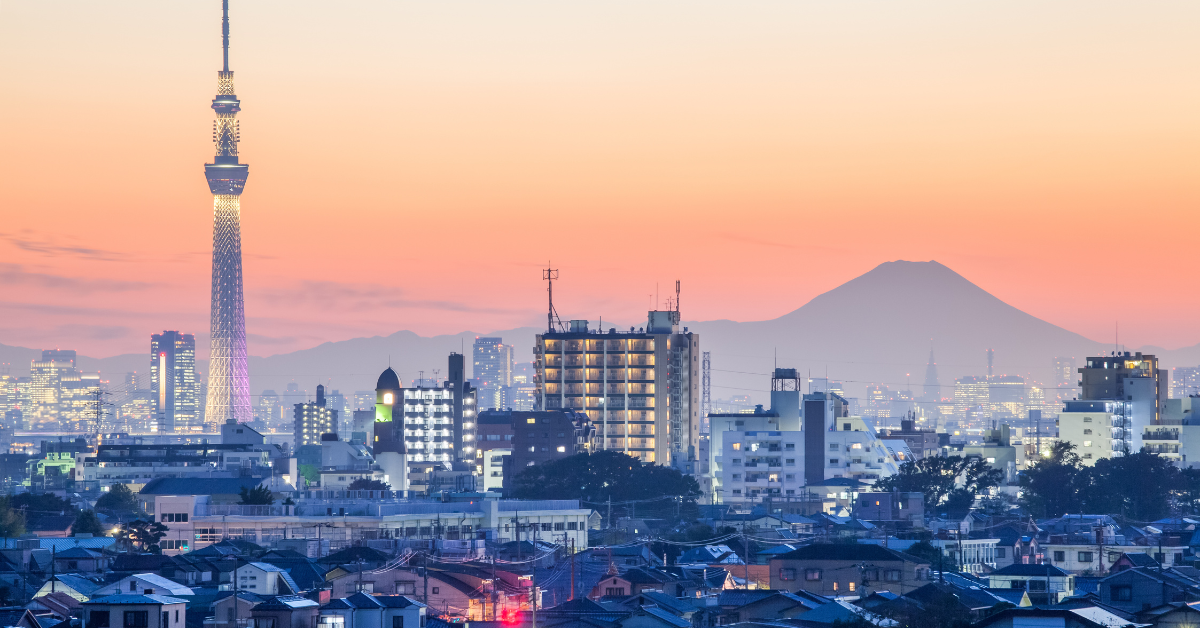Tokyo Skytree is not only a landmark admired by tourists from around the world, but also a symbol with mixed feelings among Japanese people. While many see it as a source of pride and a futuristic icon, others compare it to Tokyo Tower and voice concerns about crowds and costs. This article introduces how Japanese people truly see the Skytree, highlighting both admiration and criticism.
The Appeal of Tokyo Skytree for Japanese People
Standing at 634 meters, Tokyo Skytree is the world’s tallest self-standing broadcasting tower, and Japanese people feel a great sense of pride in it. Its design is widely praised as a “symbol of the future”, and it shows a completely different face in the daytime and at night.
The view from the observation deck is breathtaking. On clear days, visitors can even see Mount Fuji and the Boso Peninsula, making it a place that Japanese people describe as “a must-visit at least once.” Seasonal and event-based illuminations also add a unique charm to everyday life, blending naturally into the rhythm of Japanese culture.
| Appeal of Skytree | Japanese Reaction |
|---|---|
| Beautiful design | Praised as futuristic and refined |
| Observation deck view | Moving experience with views of Mount Fuji and Tokyo Bay |
| Illuminations | Looking forward to seasonal color changes |
| Landmark value | Seen as a symbol representing Tokyo |
Challenges as Seen by Japanese People
Of course, not everyone praises Skytree without reservations. During its construction, there were debates over the enormous costs. In the early days after opening, crowds were overwhelming, and tickets were hard to obtain, leading to complaints that “even locals couldn’t easily go.”
Skytree is also often compared to Tokyo Tower. While Skytree surpasses in height and function, Tokyo Tower carries decades of nostalgia and is seen as a “warmer, more familiar symbol.” Some Japanese feel that Skytree still lacks the emotional weight that Tokyo Tower holds.
| Challenge | Detail | Japanese Voices |
|---|---|---|
| Construction costs | Several hundred billion yen | “Was it really necessary?” |
| Crowds | Long waiting times at observation decks and malls | “I couldn’t enjoy it calmly.” |
| Comparison with Tokyo Tower | History and familiarity | “Skytree is taller, but Tokyo Tower has stronger memories.” |
Local Opinions and Economic Impact
For the people of Sumida Ward, Skytree has transformed the town. The influx of tourists boosted local shops, restaurants, and hotels, bringing economic vitality.
However, the increased crowds also created concerns. Some residents say that the quiet atmosphere of the past was lost. The situation shows both benefits and drawbacks.
| Perspective | Positive Impact | Concerns |
|---|---|---|
| Tourism numbers | Over 30 million visitors per year | Heavy crowds and traffic jams |
| Economic effect | Growth of restaurants and commercial facilities | Rising rent and living costs |
| Local life | Pride in being widely recognized | Loss of peacefulness |
How Japanese People Enjoy the Illuminations
Illuminations are one of the most beloved features for Japanese people. While the standard colors are blue and purple, special colors appear on holidays and events.
For example, Olympic seasons brought the five Olympic colors, while disaster memorials were marked by blue lighting as a symbol of prayer. Many Japanese people take photos and share them on social media, often saying “What color is it today?”
| Event | Illumination Color | Japanese Impression |
|---|---|---|
| Cherry blossom season | Pink | Bright and festive for spring |
| Christmas | Red and green | A family-friendly warm atmosphere |
| Disaster memorial | Blue | A quiet sense of remembrance |
| Sports events | Olympic colors | Heightens national pride and unity |
The Psychological Difference from Tokyo Tower
Japanese people see Tokyo Tower and Skytree as symbols of different eras. Tokyo Tower represents postwar recovery, holding sentimental value for many generations. Skytree, on the other hand, is perceived as a symbol of modern technology and the future.
| Item | Tokyo Tower | Skytree |
|---|---|---|
| Height | 333 meters | 634 meters |
| Era symbolized | Showa era recovery | Heisei and Reiwa modernity |
| Impression | Warm and nostalgic | Advanced and modern |
| Popularity reasons | Family memories, TV dramas | Record-breaking height, cutting-edge facilities |
The Cultural Significance of Tokyo Skytree
Beyond being a broadcasting tower, Skytree stands as a symbol of Japanese technology and design excellence. Built with advanced earthquake-resistant engineering, it represents safety combined with beauty—something Japanese people are proud of.
It is also integrated into people’s personal lives. Many couples choose it as a proposal spot, schools select it for field trips, and families gather there for special occasions. Skytree is not just architecture; it has become a cultural symbol of modern Tokyo.
Conclusion
In summary, Japanese people’s evaluation of Tokyo Skytree is largely positive. It is praised for its futuristic design, overwhelming height, and contribution to local revitalization. At the same time, crowding issues and emotional comparisons to Tokyo Tower remain as challenges.
Nevertheless, Skytree has firmly established itself as “the representative symbol of modern Tokyo.” It is more than just a sightseeing spot—it enriches daily life, provides joy through illuminations, and creates meaningful moments for people. For Japanese society, it is certain to remain an irreplaceable landmark well into the future.






